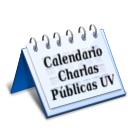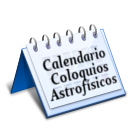Noviembre 11, 2015. Noticias IFA
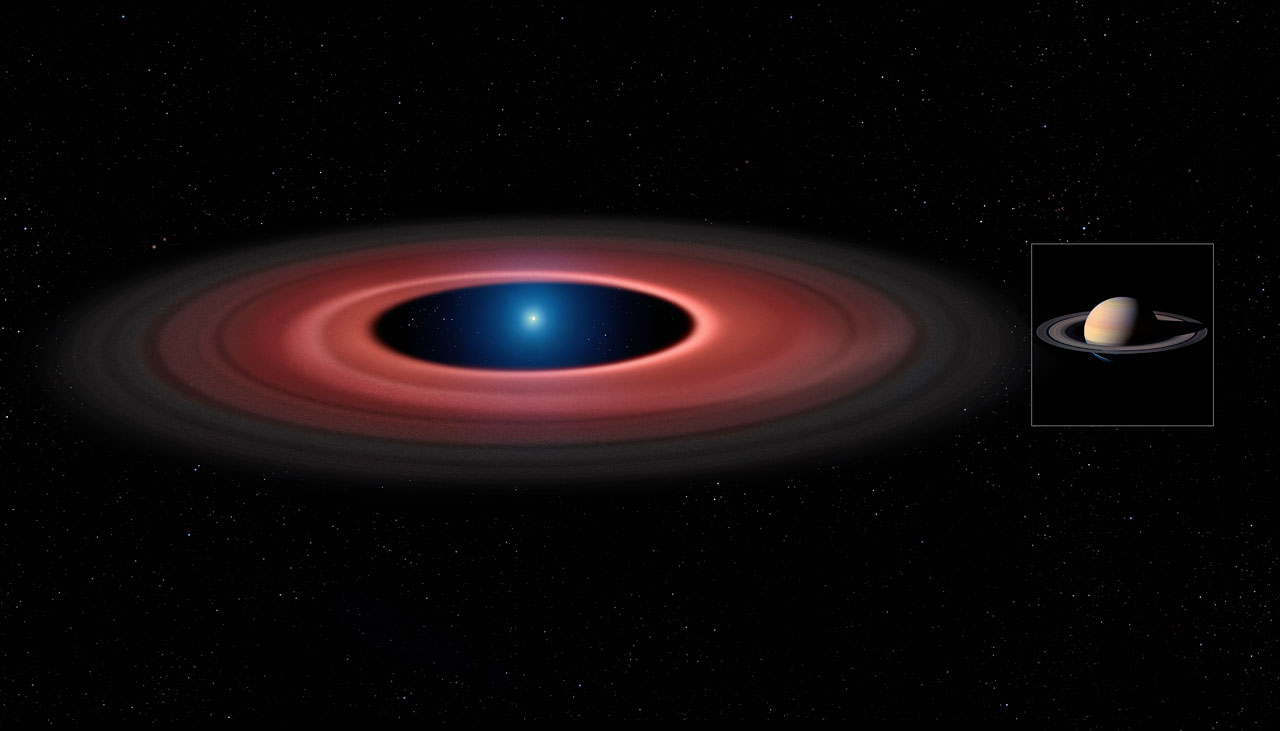 With that title, ESO publishes Science Release eso1544 explaning how VLT maps out the remains of a white dwarf’s meal. The remains of a fatal interaction between a dead star and its asteroid supper have been studied in detail for the first time by an international team of astronomers using the Very Large Telescope at ESO’s Paranal Observatory in Chile. This gives a glimpse of the far-future fate of the Solar System. The team led by Christopher Manser, a PhD student at the University of Warwick in the United Kingdom, and in which Steven Parsons of IFA participated in the resulting paper, used data from ESO’s Very Large Telescope (VLT) and other observatories to study the shattered remains of an asteroid around a stellar remnant using a technique called Doppler tomography — similar in principle to medical tomographic scans of the human body — which allowed them to map out in detail the structure of the glowing gaseous remains of the dead star’s meal orbiting J1228+1040 for the first time — a white dwarf called SDSS J1228+1040. Using several instruments, including the Ultraviolet and Visual Echelle Spectrograph (UVES) and X-shooter, both attached to the VLT, the team obtained detailed observations of the light coming from the white dwarf and its surrounding material over an unprecedented period of twelve years between 2003 and 2015. Observations over periods of years were needed to probe the system from multiple viewpoints [2]. “The image we get from the processed data shows us that these systems are truly disc-like, and reveals many structures that we cannot detect in a single snapshot,” explained lead author Christopher Manser. Steven Parsons participated in the pulished paper. Image: An artist's impression of the debris disc around the white dwarf SDSS J1228+1040 (left) at the same scale as Saturn and its rings (right). While the white dwarf in SDSS J1228+1040 has about seven times smaller diameter than Saturn, it has a mass 2500 times greater. (image credits: ESO)
With that title, ESO publishes Science Release eso1544 explaning how VLT maps out the remains of a white dwarf’s meal. The remains of a fatal interaction between a dead star and its asteroid supper have been studied in detail for the first time by an international team of astronomers using the Very Large Telescope at ESO’s Paranal Observatory in Chile. This gives a glimpse of the far-future fate of the Solar System. The team led by Christopher Manser, a PhD student at the University of Warwick in the United Kingdom, and in which Steven Parsons of IFA participated in the resulting paper, used data from ESO’s Very Large Telescope (VLT) and other observatories to study the shattered remains of an asteroid around a stellar remnant using a technique called Doppler tomography — similar in principle to medical tomographic scans of the human body — which allowed them to map out in detail the structure of the glowing gaseous remains of the dead star’s meal orbiting J1228+1040 for the first time — a white dwarf called SDSS J1228+1040. Using several instruments, including the Ultraviolet and Visual Echelle Spectrograph (UVES) and X-shooter, both attached to the VLT, the team obtained detailed observations of the light coming from the white dwarf and its surrounding material over an unprecedented period of twelve years between 2003 and 2015. Observations over periods of years were needed to probe the system from multiple viewpoints [2]. “The image we get from the processed data shows us that these systems are truly disc-like, and reveals many structures that we cannot detect in a single snapshot,” explained lead author Christopher Manser. Steven Parsons participated in the pulished paper. Image: An artist's impression of the debris disc around the white dwarf SDSS J1228+1040 (left) at the same scale as Saturn and its rings (right). While the white dwarf in SDSS J1228+1040 has about seven times smaller diameter than Saturn, it has a mass 2500 times greater. (image credits: ESO)
Associated links: ESO Science Release - Scientific Paper



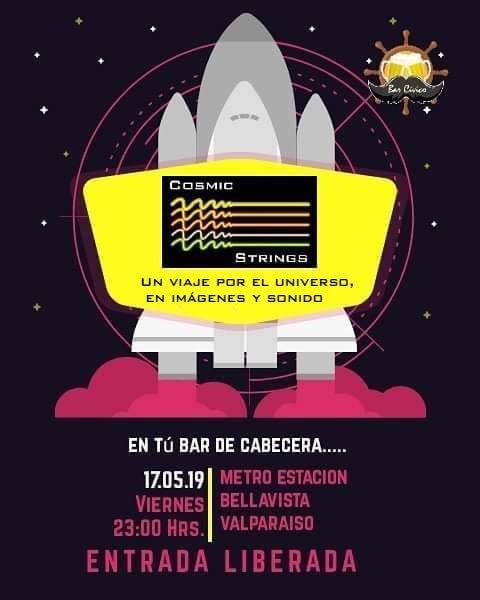 16/05/20019 Este viernes 17 de mayo se viene con un panorama de otro planeta, con el show astronómico de la banda Cósmic Strings integrada por varios investigadores del Instituto de Fisica y Astronomia. La actividad, de entrada liberada, tendrá lugar a las 23:00 horas en el Bar Cívico, ubicado en calle Blanco 1273, Valparaíso, cercano a la estación Bellavista del Metrotren. La música inspirada en planetas y...
16/05/20019 Este viernes 17 de mayo se viene con un panorama de otro planeta, con el show astronómico de la banda Cósmic Strings integrada por varios investigadores del Instituto de Fisica y Astronomia. La actividad, de entrada liberada, tendrá lugar a las 23:00 horas en el Bar Cívico, ubicado en calle Blanco 1273, Valparaíso, cercano a la estación Bellavista del Metrotren. La música inspirada en planetas y...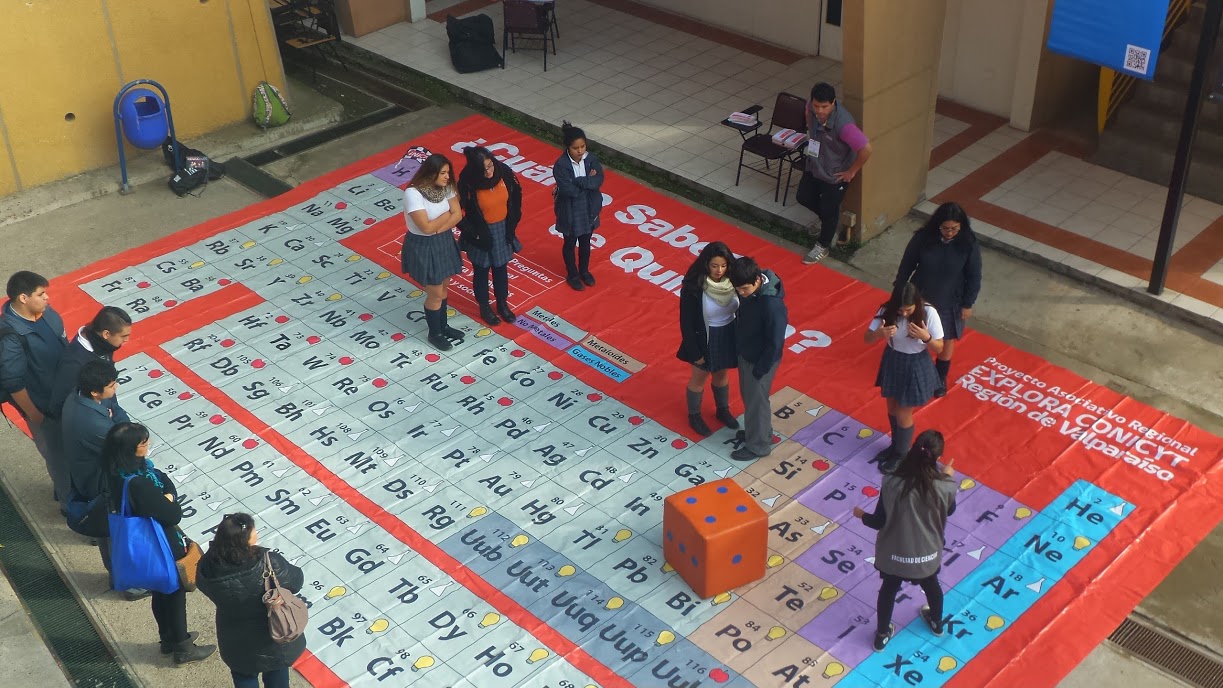 16/05/2019 Como ya es tradición, el viernes 24 de mayo, el Instituto de Física y Astronomía formará parte de la Feria de la Ciencia que cada año la Universidad de Valparaíso realiza para público escolar de la región. El objetivo es ofrecer a escolares y comunidades locales una muestra de actividades prácticas de investigación y formación en un espacio académico. Los alumnos tienen la po...
16/05/2019 Como ya es tradición, el viernes 24 de mayo, el Instituto de Física y Astronomía formará parte de la Feria de la Ciencia que cada año la Universidad de Valparaíso realiza para público escolar de la región. El objetivo es ofrecer a escolares y comunidades locales una muestra de actividades prácticas de investigación y formación en un espacio académico. Los alumnos tienen la po...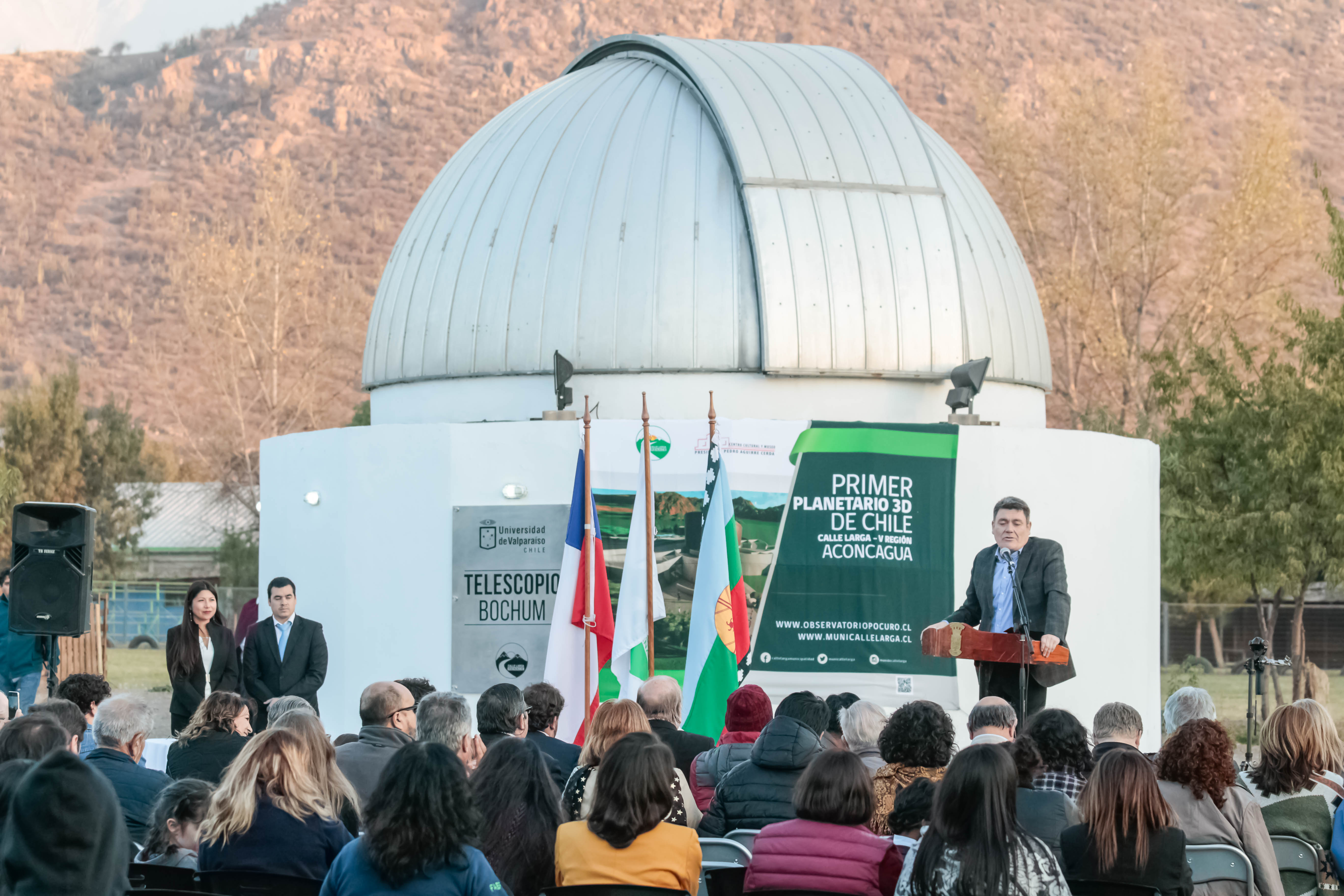 14/05/2019 La comuna de Calle Larga, distante 137 kilómetros de Valparaíso y sólo 75 de Santiago, inicia su despegue como nuevo epicentro astronómico de la zona central del país gracias al desarrollo que ha experimentado el Observatorio Pocuro, ubicado en el Centro Cultural Pedro Aguirre Cerda.
Este camino se ha ido pavimentando con la colaboración de la Universidad de Valparaíso, al establecer una...
14/05/2019 La comuna de Calle Larga, distante 137 kilómetros de Valparaíso y sólo 75 de Santiago, inicia su despegue como nuevo epicentro astronómico de la zona central del país gracias al desarrollo que ha experimentado el Observatorio Pocuro, ubicado en el Centro Cultural Pedro Aguirre Cerda.
Este camino se ha ido pavimentando con la colaboración de la Universidad de Valparaíso, al establecer una... 14/05/2019 La Dra Maja Vuckovic participará como expositora en la escuela de verano “Pulsaciones Estelares a lo largo de la evolución estelar” que se llevará a cabo en La Plata, Argentina entre el 11 y el 22 de noviembre.
El evento es una de las actividades astronómicas del año destacadas por el Boletín de Estrellas Masivas (Massive Star Newsletter) y se enmarca como parte del proyecto POEMS, Marie Curie Horizon 2020, d...
14/05/2019 La Dra Maja Vuckovic participará como expositora en la escuela de verano “Pulsaciones Estelares a lo largo de la evolución estelar” que se llevará a cabo en La Plata, Argentina entre el 11 y el 22 de noviembre.
El evento es una de las actividades astronómicas del año destacadas por el Boletín de Estrellas Masivas (Massive Star Newsletter) y se enmarca como parte del proyecto POEMS, Marie Curie Horizon 2020, d...
 10/05/2019 Utilizando observaciones submilimétricas del disco de escombros alrededor de la estrella debaja masa TWA 7, un grupo internacional de astrónomos liderado por la investigadora del IFA y Directora del NúcleoMilenio de Formación Planetaria Amelia Bayo, concluyó que la arquitectura asumida para esteobjeto es diferente a lo qu...
10/05/2019 Utilizando observaciones submilimétricas del disco de escombros alrededor de la estrella debaja masa TWA 7, un grupo internacional de astrónomos liderado por la investigadora del IFA y Directora del NúcleoMilenio de Formación Planetaria Amelia Bayo, concluyó que la arquitectura asumida para esteobjeto es diferente a lo qu...
